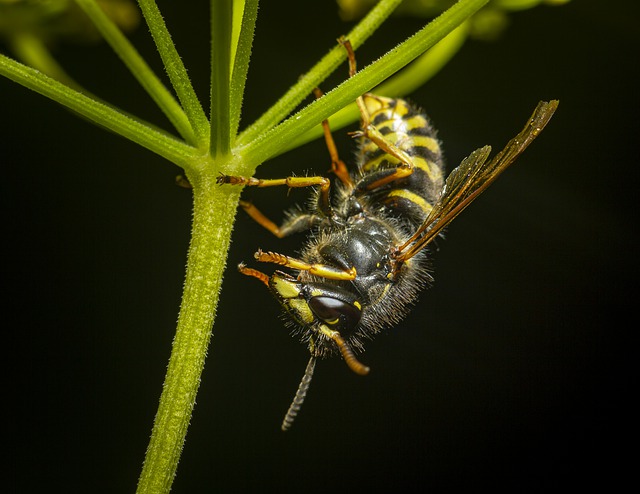The Common Wasp is about 2 cm long; they have bright yellow and black bands along the body, with a noticeable ‘waist’ between the thorax and abdomen.
They also have two pairs of wings and reasonably long, robust antennae. The sting is located at the tip of the abdomen.
The queens (reproductive females) are larger than workers (non-reproductive females).
The Common Wasp can be distinguished from other similar social wasps by the anchor-shaped mark on its face it is very easy to identify.
They are usually seen from April to late October and are hostile when provoked.

Vespula Vulgaris
The common wasp usually forms large colonies below ground, but occasionally nests may be made in wall cavities, hollow trees and attics.
Queens emerge from hibernation during the spring, and they search for a suitable location in which to start a new colony.
She then begins to build the nest with chewed up wood pulp, which dries to make a papery substance.
A few eggs are laid, which develop into non-reproductive workers.
These workers eventually take over the care of the nest, and the queen’s life is then devoted solely to egg-laying.
At the end of autumn, a number of eggs develop into new queens and males, which leave the nest and mate.
The new queens seek out suitable places in which to hibernate, and the males and the old colony (including the old queen) die.